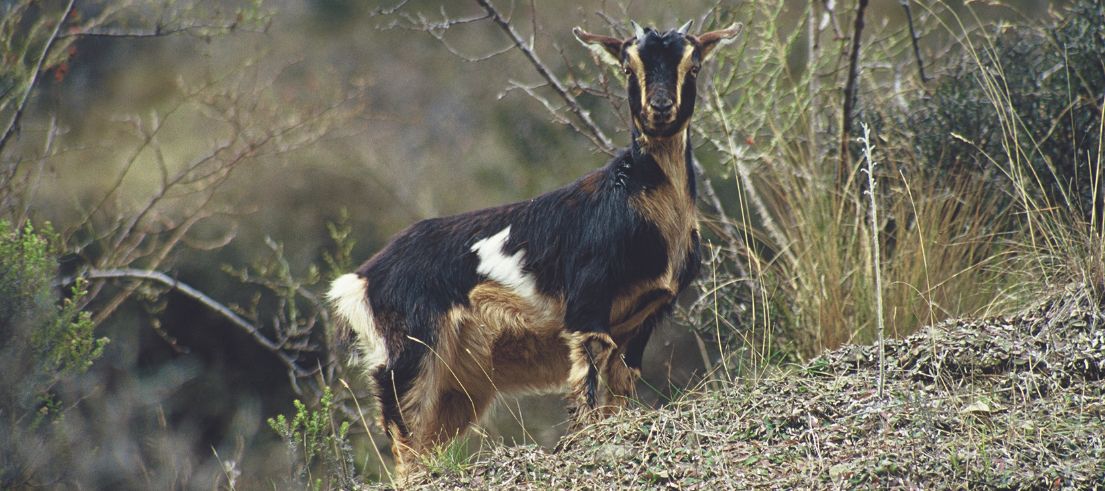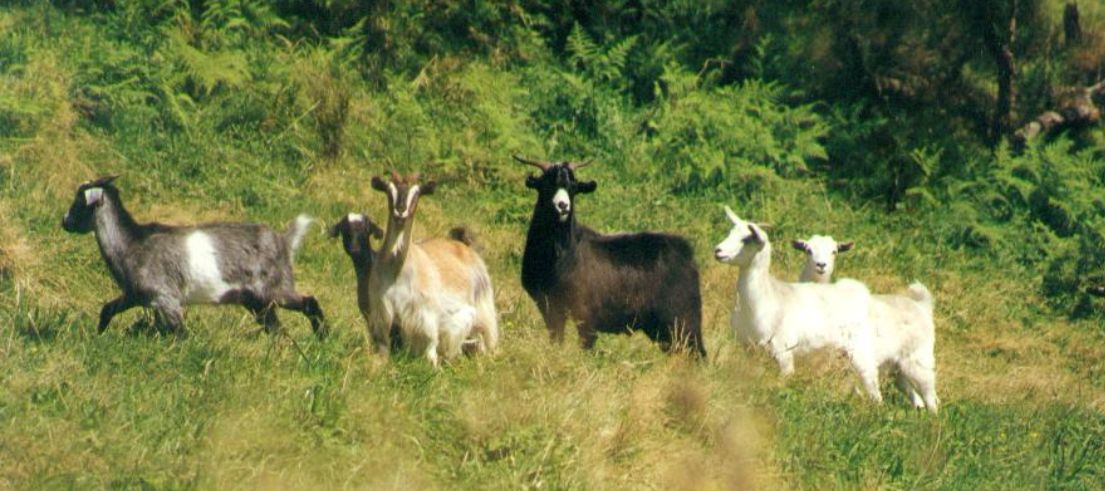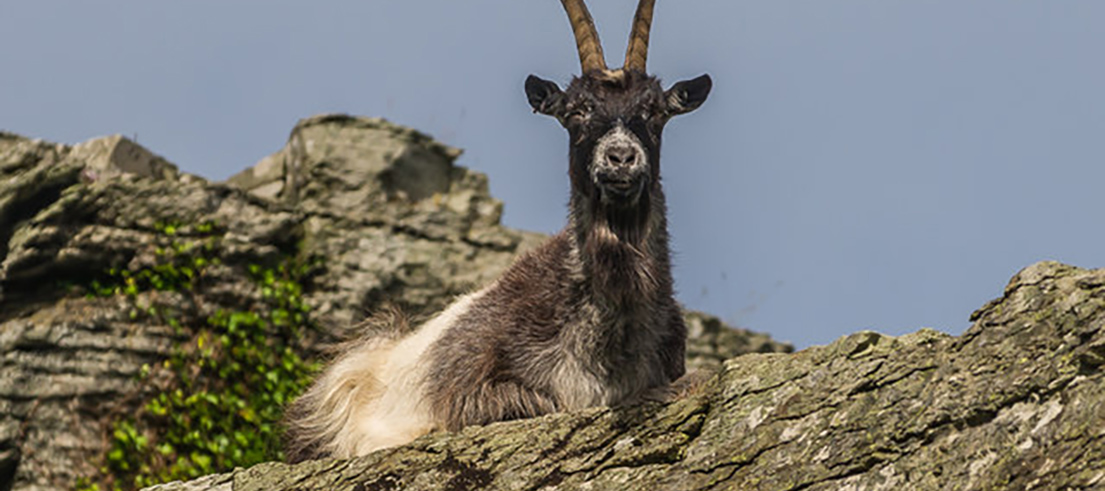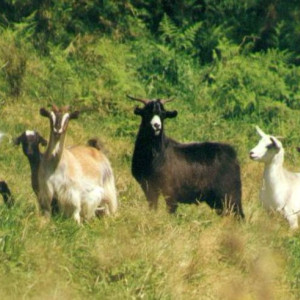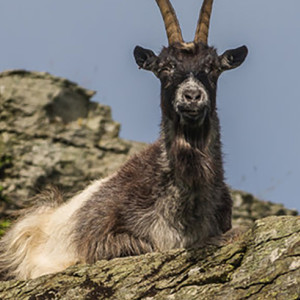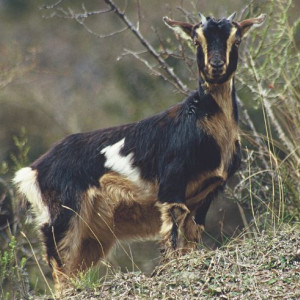Feral goats are even-toed, hoofed ungulates and monochromatic or a mixture of black, white, and brown. Their browsing reduces vegetation cover and prevents regeneration.
Description
- Males weigh around 45-55kg, females around 25-35kg.
- Free individuals or wild populations which have escaped from a property where they are farmed.
- Habitats include pastures, grasslands, scrub, open habitats, forests, and rocky outcrops.
What you need to know
Browsing reduces vegetation cover, density and species richness, prevents regeneration and alters plant community composition in favour of unpalatable species. Can act as a disease reservoir for farmed goats, and cause livestock escapes by damaging fencing.
Management approach
This is a declared pest managed under the Canterbury Regional Management Plan 2018 – 2038 (PDF file, 10.6MB) within the site led programme.
Site led
We established a site led programme on Banks Peninsula to prevent farmed goats from becoming feral and to assist in containing and reducing feral goat numbers and to protect native biodiversity.
Landowners within this site led area are responsible for ensuring secure fencing and ensuring their goats are clearly identifiable through a marking, such as an ear tag.
The Feral Goat Eradication Programme is led by the Goat Working Group, with the collaborative aim of which is to work with landowners to eradicate feral goats on Banks Peninsula. The group is made up of representatives from Environment Canterbury, Banks Peninsula Conservation Trust, Pest Free Banks Peninsula, Christchurch City Council and the Department of Conservation.
Rules
Land occupiers are required to tag all farmed goats and ensure they are contained behind a goat-proof fence.
Outside of the site led designated under the Canterbury Regional Pest Management Plan 2018 – 2038, the management of this species is regulated under the Wild Animal Control Act 1977 administered by the Department of Conservation.
View the Department of Conservation’s framework for the control of feral goats.

